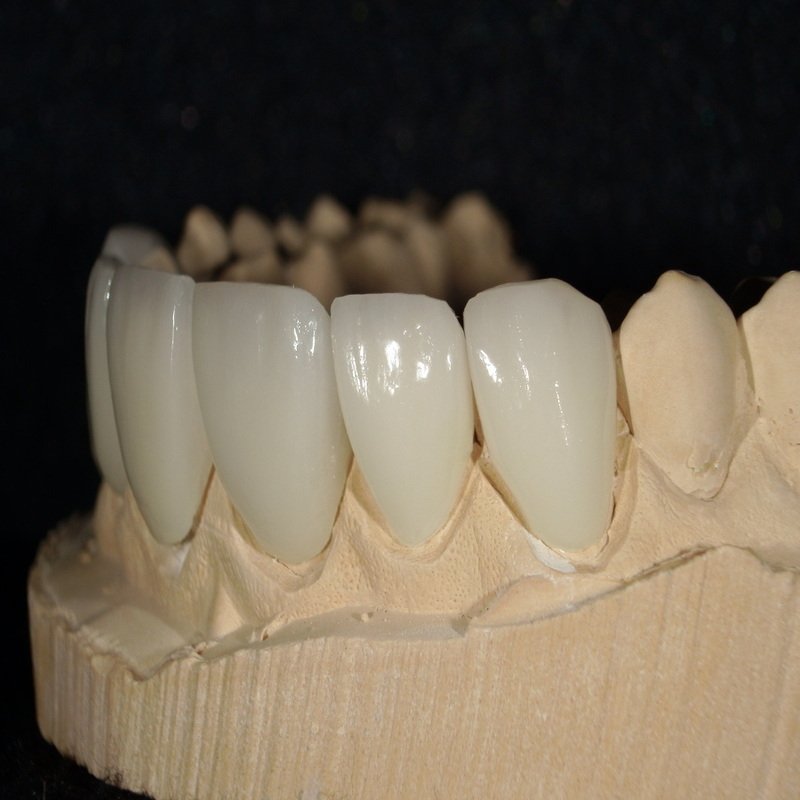Get Veneers: Shaving Down Your Teeth True or False
Veneers have made their way into different social media platforms. Therefore, you’ll see videos from people who claim to have gotten veneers and whose teeth look shark-like.
Of course, dental veneers have many cosmetic benefits, which is why so many public figures prefer them and have played an essential role in promoting them. Nowadays, everyone is getting veneers to taste a Hollywood smile.
However, with the rise of their popularity, there’s also a lot of misinformation going around. Many wonder if their teeth will have to be shaved down to pegs to transform their smile with this cosmetic treatment.
So do you? The short answer is no, but let’s see exactly why. Stay until the end of this article to learn more about the veneer’s treatment.
Veneers: Do Your Teeth Have to Be Shaved?
Let’s look at why natural teeth need some shaving in the first place. The first step is to make room for the veneer. A porcelain veneer’s minimum thickness is realistically 0.5mm.
While thinner veneers are possible, their translucency is a disadvantage. That brings us to the second point: desired aesthetics.
Hand-layering porcelain with varying thicknesses, just like natural teeth, is necessary to produce a genuine look.
A purposeful incisal reduction is also necessary to generate incisal translucency (those transparent wisps at the bottom edge) that mimics natural teeth. The third step is to clear space for proper positioning.

We’ve all seen veneers that are too bulky, touching in the wrong places, and having an unnatural gum line.
Veneer placement is critical because it must be accurate. Frequently, veneer-shaved teeth are necessary to achieve a precise result.
People frequently believe their teeth must be trimmed back into fangs to receive porcelain.
So, I’ve compiled a quick guide to the criteria used to determine how much of a tooth they have to shave.
Straight, Gappy, or Sit Back Teeth
Patients with straight or little gappy teeth, or teeth that sit back, may not need to have their teeth shaved, and their veneers will fit perfectly over their existing teeth. On the other hand, the surface of your tooth will be prepared for the veneers to adhere to it securely.

Slightly Crooked Teeth
If your teeth are slightly misaligned, you may require shaving to ensure the veneers sit flush and straight on your smile line. Your dentist will also prepare the surface of your tooth so that this dental treatment can fit and stay properly in place.

Large, Crooked Teeth
If you have more prominent teeth and want them smaller, your teeth will be prepped more than others. If you have crooked or forward-sitting teeth, we recommend a different treatment approach before contemplating veneers. You will initially be given these choices (braces, Inv align, and even jaw surgery) as the suggested smile solution.

If you’re still adamant about getting veneers because you don’t like the form or color of your teeth (which braces can’t fix), we can review the options further.
Is The Veneer’s Process Painful?
In most cases, the application of veneers is short and painless. If needed, we can utilize sedation, usually a local anesthetic or inhalation sedation, to help put you at ease. Patients may experience minor soreness following the surgery. Tylenol and Advil are commonly effective in treating this.

Is It Possible To Have Veneers Without Shaving Your Teeth?
New veneer technology allows for the insertion of veneers with little or no preparation. The three varieties of veneers are Lumineers, Durathin, and Vivaneers, which lessen or eliminate the need for dentists to shave down teeth.
Dentists hope to place these veneers immediately on top of your natural teeth because some circumstances and conditions can make a no-prep veneer procedure ineffective. Composite bonding may be a better option if money is the main concern or you have a small chip or break in a single tooth.

Do You Want Veneers? Schedule An Appointment Today
At Trust Dental Care, we have multiple dentists and cosmetic specialists ready to consult you and answer any of your questions about dental veneers. One of our dentists in Mexico will discuss the treatment with you to ensure you take the right steps to a healthy and favorable transformation for your teeth.


